I took this camera with on the same road trip as the Techni-Pak 1. So it's more of the same slightly ugly, yet very interesting ghost/mining town stuff. First off, I have to say I think this is probably my first roll of color 35mm in at least 10 years. Maybe even a bit longer. So, while I don't hate it or anything, it just hasn't been my thing. So it was a bit interesting to me to see what I would come up with. I just have a hard time seeing beyond the "they look like snapshots of cool things" vibe. I tried my best, though. I scanned from the negatives, not the prints that came with them.
We start with full daylight. This is 1600 speed film that is supposed to look 'natural' in daylight and low light without a flash. This shot is probably around noon with full sun.
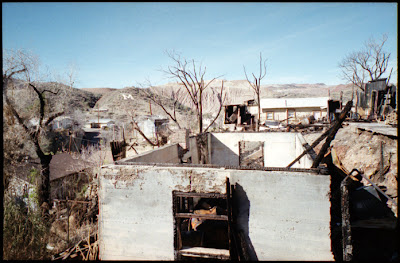
Nice, sharp image. As with the black and white film, it seems to be on the edge of overexposure. But maybe that's just because I'm used to Kodak 400 and cheaper 35mm cameras. These next two shots were taken in a very dark abandoned building. If I had used one of my toy cameras, I might have gotten a couple strips of light, but no image. This is what the camera is designed to do, without a flash, and it works quite well.
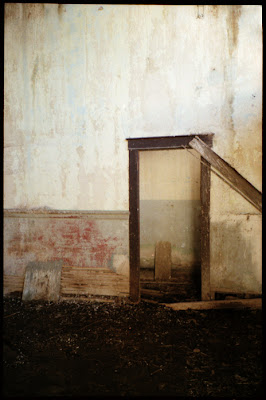

I know the shots aren't that impressive, but it really is amazing that these are just 'point at and shoot' photos in a very dark room, with no flash. I mean, seriously, the camera adjusts better to the shade than my eyes do. The detail is incredible, and the colors are as accurate as I imagine they would be, considering that I couldn't see the colors all that well. This is the outside of that same building. The dark area below is where the two above photos were shot. You can see that the camera does what it is supposed to do - adjust exposure depending on the light source. I think I'm repeating myself.
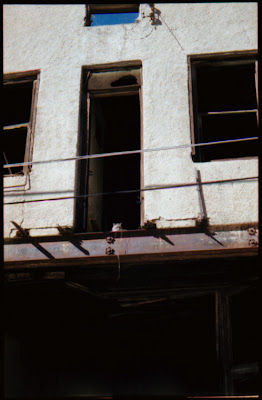
Moving on, another shot inside of a dark kitchen of an abandoned house.
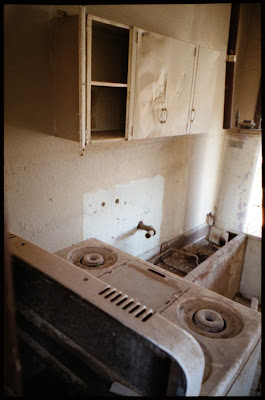
Again, nice job working in low light. Colors seem to be fairly accurate. If that kitchen could be considered to have 'color'. The same building shot from the outside shows the camera to falter a bit in its abilities.
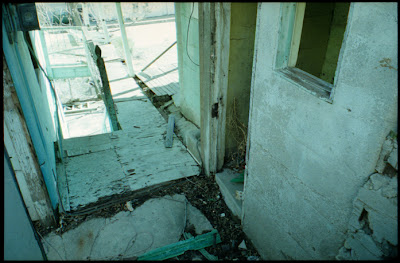
The camera exposed for the shaded area in the foreground, leaving the sunny area blown out. This is pretty common for auto-exposure cameras. Still, the camera handles it fairly well...certainly better than my digital, which often leaves areas completely black or fully blown out depending on what it exposes for.
Later, as the sun began to set, I took a few low light dusk shots. If it can shoot a dark room, it shouldn't have a problem shooting in low light outside. For comparison, a shot with my Polaroid 195 and very expired 665 (1985 to be exact...I think I got four shots out of the pack that weren't dried up).


One thing about it...it's actually kind of difficult to tell what time your shots were taken, because it still looks like full daylight. I think this was about an hour before dark, and the sun was starting to hide behind the mountains. You also get a good idea of how much wider the Fuji camera shoots. I wasn't aiming at the exact same spot, but I was standing in the same place for both shots.
About a half an hour later, it's pretty dusky. For comparison, the same wall shot with the Fuji and with a Stellar (Diana clone).
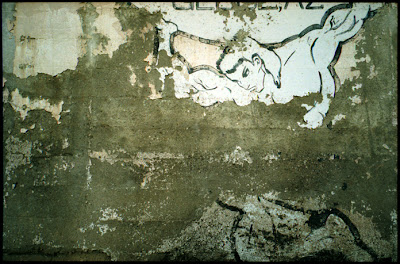
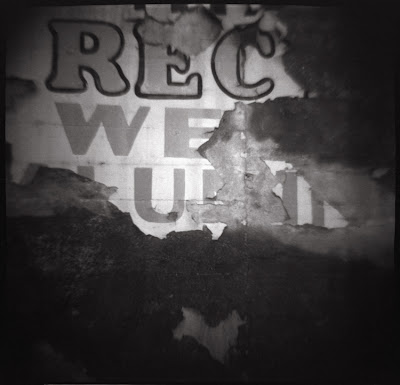
The Stellar actually did fairly well, but the Classica didn't even break a sweat. I also took a couple shots of the kitties inside again, but they weren't even worth scanning. The shots without the flash were blurry and grainy...which looks much better in black and white than in color. In color, it just looks muddy and ugly. The flash shot looked like a color shot taken with a flash (central bright, background black).
So that's it for the Fuji Natura Classica review! Again, great little camera. The shutter does slow down in very low light, so things will blur, but I didn't get any blur from camera shake with static objects. I prefer black and white over color, but it works well with both. An all-around nifty little point and shoot camera.
Still planning on a big Polaroid 150/Type 47 post here in the next few weeks. School has started, so life is a bit of a drag once again. Adios!































